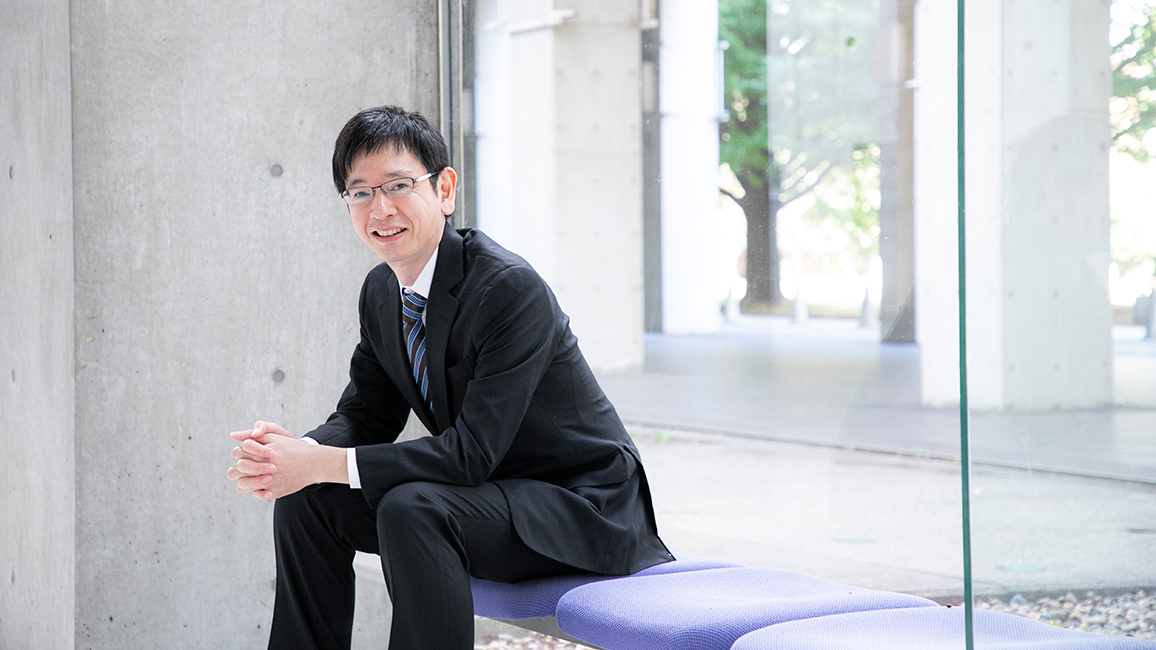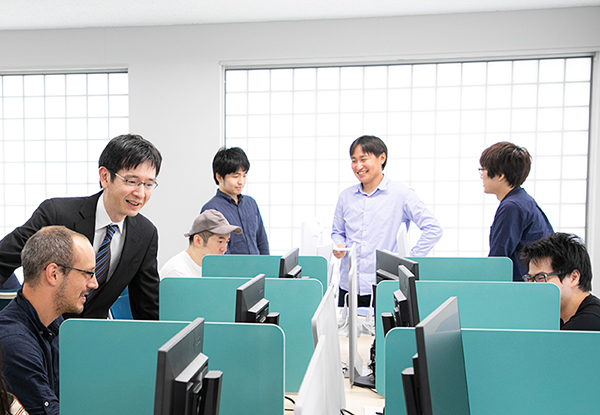- HOME
- Research at RCAST
- Visit to Laboratories
- Harada Laboratory
Harada Laboratory

How far can machines evolve?
Building an independent intelligence system for machines
The machine intelligence the Harada Lab is aiming for is developing an original, independent and advanced intelligence system for machines. It links real world information with cyber space big data, and applies powerful computational resources to understand the world at large. This model is not limited to the confines of human intelligence though; it follows the principles of information mathematics and seeks to optimize the information processing of patterns and intelligence, with the final goal of creating a self-learning machine with advanced intelligence that autonomously acquires knowledge.
Challenge of creating an autonomous robot
What exactly is machine intelligence research? Let’s take a detailed look at what it involves.
Say you want to improve the accuracy of image recognition. First, extract the image feature quantities that will be useful in recognition, and build classifiers; this requires applying all types of knowledge such as linear algebra, probability statistics, and information theory. So your research starts with reviewing mathematics textbooks, scanning through related papers, and inputting the necessary knowledge. Next, look closely at the essence of the object for recognition, enumerate the essential elements, and formalize them as a topic to research, which in order to elucidate will require you to spend time understanding the acquired knowledge and using it to create a new theory and algorithms. In the Harada Lab, rather than limiting this model to the image recognition by humans, we steadfastly seek to formulate optimal methods for machines.
When writing down the theory and algorithms, make sure to check if they will work in the real world. After writing a program and inputting a data set, set an appropriate evaluation index and verify the results. Efficiently processing vast amounts of computations will also require some ingenuity in the computation methods used, such as parallel processing. Once you have verified the results, and if there are no problems, then you’ve successfully developed a new image recognition method.
The catalyst for this kind of research was our desire to create a robot and self-learning computer that autonomously acquires knowledge in the real world. So, we have been continuing our integrated research on essential elements such as computer vision, natural language processing, and machine learning. We are aiming to develop an original and independent intelligence system that is optimized for machines.
It all started with creating games in elementary school
Now that we have a rough idea in terms of our elemental research, we are ready to start integrating each element and also begin building a physical robot – one that understands what it does not know and is self-motivated to keep learning. We want to implement in the robot an intelligence that is optimal for a machine, rather than seeking an optimal solution for intelligence from humans. With that in mind as well, we named this field of research “machine intelligence.”
Incidentally, once you actually start building a robot, you’ll find that maintenance work will take up a considerable amount of time. It takes around 3-to-4 students to maintain one robot, and it’s possible about 90% of your research time will be spent on maintenance; because a real-life robot is a very delicate machine.
Despite the huge amount of maintenance work, we still want to build a real robot using our accumulated knowledge and findings on machine intelligence. So, the Harada Lab welcomes anyone who wants to study computer science, and also those who are interested in robots.
I’m not sure why, but I loved computer programming when I was in elementary school. I became interested in programming after a reading a book on BASIC language, which I happened to buy one day. Since we didn’t have a computer at home, I would often go to electronics retail stores and write game programs using the computers on display. Naturally, I wasn’t able to save the programs I wrote, as these were store front display items; but I was satisfied enough if the games worked as per my programming.
A robot that acts autonomously, according to a program I had written. For me, perhaps creating such a robot is an extension of my writing programs for fun during elementary school.
Finding the fun in constant challenges
The unspoken rule of the Harada Lab is to make everything we create open to the public; that includes the methods we come up with and the programs to implement them, as well as the data set– everything is made open. It also means once we make our work publicly available, we lose our advantage in this field. Naturally, we must ensure the content we publish is completely reproducible. I believe the right approach to have in computer science is doing what you can to ensure anyone anywhere in the world can benefit from frontier research.
This is a research field of equal opportunities for everyone, and that is what motivates us to tackle the next new research theme. The Harada Lab welcomes students who can find the fun in the constant challenges of such research.
Many of our graduate students go on to work at venture companies and other IT enterprises, and there are also a certain number of students who launch their own business while still at the university. And of course, we also nurture students who want to proceed to the doctorate level. The Harada Lab is dedicated to developing machine intelligence that will benefit people. So, if you share this desire, please knock on the Harada Lab’s door.




